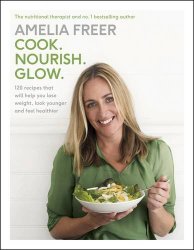|
By following these general tips, you will become an effective and healthy food shopper!
- Learn to read labels. The "nutrition facts" label helps you track how much fat, saturated fat, cholesterol, sodium,
fiber, and important nutrients you eat. The label also lists the number of calories and grams of carbohydrate, protein, and fat in a serving of food.
You can use these numbers to calculate the exchanges in a serving of food. Some food manufacturers list the exchanges on the package. Supermarkets often
show nutrition information for fresh meat, poultry, seafood, vegetables, and fruits on posters or take-home brochures in each department.
- Think "lean". Choose cuts of meat with the words "round" or "loin" in the name (for example, ground round or pork
tenderloin), skinless poultry, fish, and dry beans, peas, and lentils.
- Buy fat-free and low-fat milk and yogurt. Taste-test different types of reduced-fat cheese to find the ones you like.
- Stock up on tasty low-fat snacks such as pretzels, air-popped popcorn, flavored rice cakes, and baked bagel chips.
- Choose soft-style margarines with liquid vegetable oil as the first ingredient. Tub or liquid margarines have less
saturated fat than stick margarines.
-
Get big fat savings! Try reduced-fat or fat-free sour cream, cream cheese, mayonnaise, salad dressing, margarine,
and tartar sauce. Experiment to find the best-tasting brands.
- Select frozen vegetables made without butter or sauces.
- Look for reduced-sodium Worcestershire and soy sauces; canned broth, beans, and soups; bouillon cubes; luncheon meats;
bacon; and ham.
- Choose whole grain breads and crackers to boost fiber. The first ingredients should be whole wheat or another type of whole grain flour.
- Choose high fiber cereal.
|



